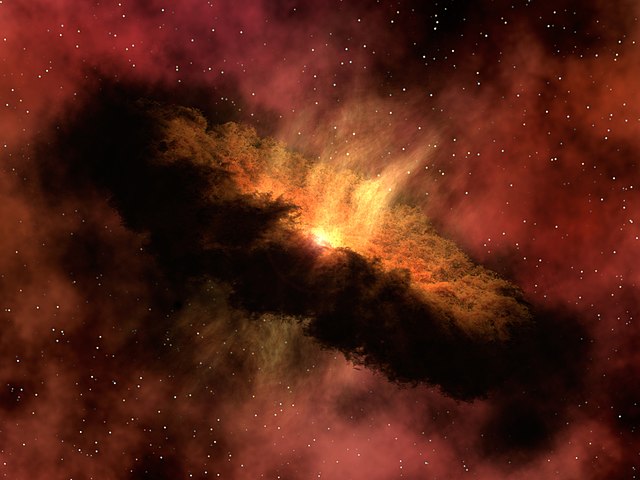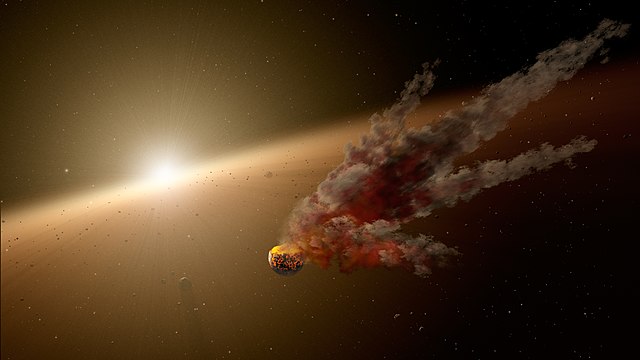Venus is the second planet from the Sun. It is a terrestrial planet and is the closest in mass and size to its orbital neighbour Earth. Venus is notable for having the densest atmosphere of the terrestrial planets, composed mostly of carbon dioxide with a thick, global sulfuric acid cloud cover. At the surface it has a mean temperature of 737 K and a pressure of 92 times that of Earth's at sea level. These extreme conditions compress carbon dioxide into a supercritical state close to Venus's surface.
True colour image of Venus, as captured by MESSENGER. A global layer of bright sulfuric acid clouds permanently obscures the Venusian surface.
Venus to scale among the terrestrial planets of the Solar System, which are arranged by the order of their Inner Solar System orbits outward from the Sun (from left: Mercury, Venus, Earth and Mars)
Surface of Venus as seen by Venera 13.
Radar mosaic of two 65 km (40 mi) wide (and less than 1 km (0.62 mi) high) pancake domes in Venus's Eistla region
A planet is a large, rounded astronomical body that is neither a star nor its remnant. The best available theory of planet formation is the nebular hypothesis, which posits that an interstellar cloud collapses out of a nebula to create a young protostar orbited by a protoplanetary disk. Planets grow in this disk by the gradual accumulation of material driven by gravity, a process called accretion. The Solar System has at least eight planets: the terrestrial planets Mercury, Venus, Earth, and Mars, and the giant planets Jupiter, Saturn, Uranus, and Neptune.
The eight planets of the Solar System with size to scale (up to down, left to right): Saturn, Jupiter, Uranus, Neptune (outer planets), Earth, Venus, Mars, and Mercury (inner planets)
A protoplanetary disk
Asteroids colliding during planet formation
The Sun's, planets', dwarf planets' and moons' size to scale, labelled. Distance of objects is not to scale. The asteroid belt lies between the orbits of Mars and Jupiter, the Kuiper belt lies beyond Neptune's orbit.








